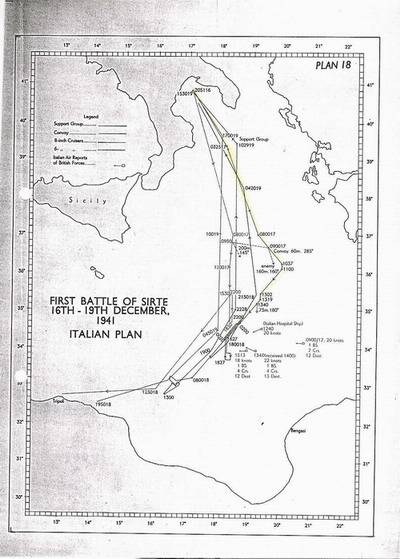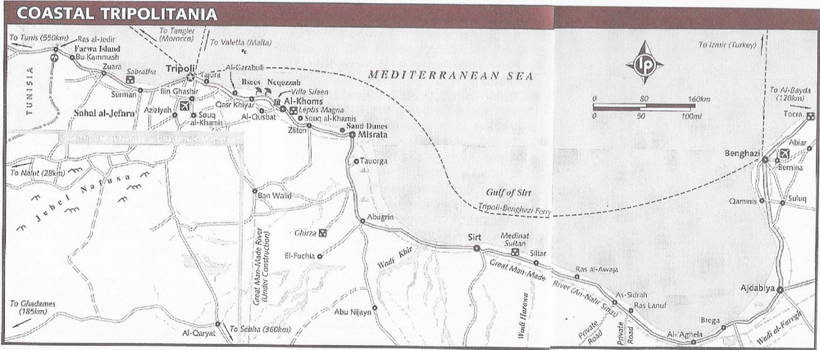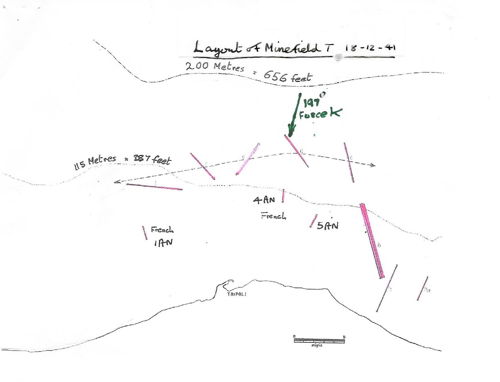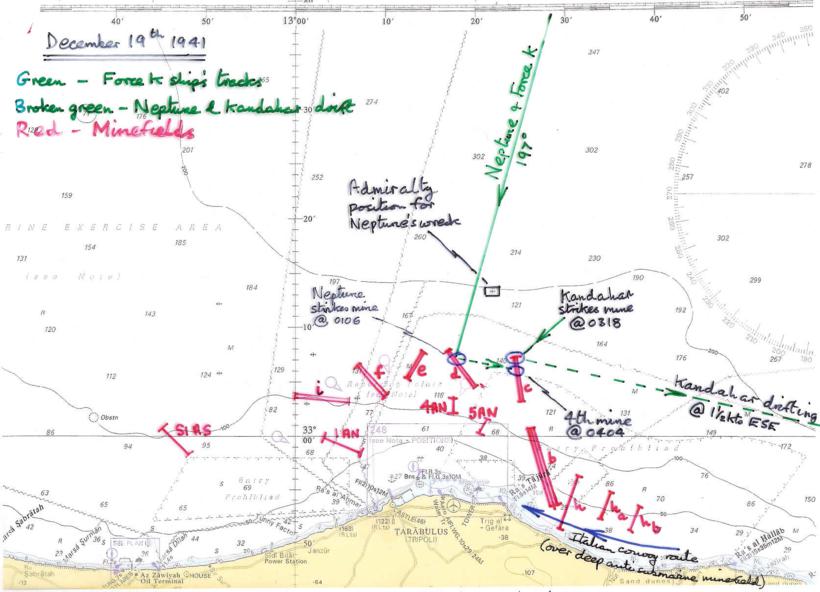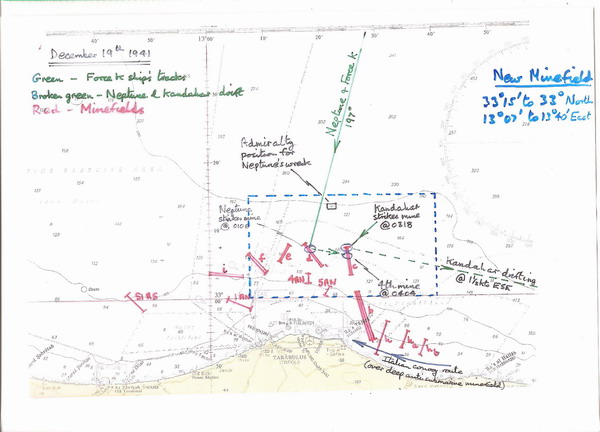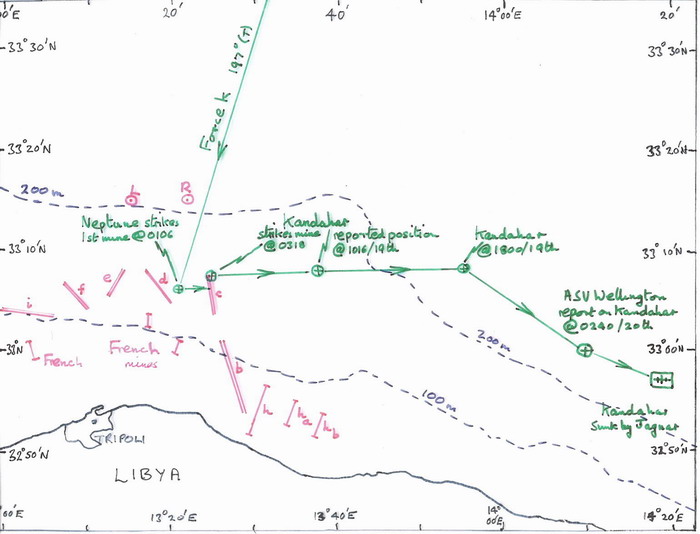Board of Inquiry - analysisBoard of Inquiry - analysis
BOARD OF INQUIRY REPORT - ANALYSIS (draft 8)
Comments by John McGregor (dated 25th Feburary 2020) on the Board of Inquiry (BOI) report held on 24th December '41 and forwarded on 9th January '42 to the Admiralty by hand of Rear Admiral Rawlings. For questions to be asked press here. For my conclusions press here. For my summary press here To return press 'back space'.
On February 8th 2016 the survey ship HMS Enterprise found 3/4 of the wreck of HMS Neptune which removes the uncertainty of what happened to her. She was sunk in the coastal minefield barrier after hitting a fourth mine in minelane 'c'. The precise position of the wreck remains confidential but suffice to say that she lies outside the 12 mile Libyan territorial limit in quite deep water..
1) 2 quotes from Churchill
“If any supplies get through YOU HAVE FAILED YOUR DUTY” (Winston Churchill’s personal message to Admiral Cunningham October '41)
“…the vital importance of intercepting surface ships taking reinforcements, supplies, and, above all fuel to Benghazi. Our information here is of a number of vessels now approaching or starting. ….. I shall be glad to hear what action you propose to take. Stopping of these ships may save thousands of lives apart from aiding a victory of cardinal importance” (Winston Churchill to Admiral Cunningham 23 Nov '41)
2) A quote from Admiral Sir Andrew Cunningham
“The interception of enemy supplies was naturally a subject which occupied our every waking moment; but that the enemy’s air strength had in any way diminished showed that the usual optimism at home was not based upon any real knowledge of the facts. We, who were in a position to know, had observed no falling off in the enemy’s air activity over the sea.” (Admiral Cunningham’s dry comment on Churchill’s unhelpful messages - Sailor’s Odyssey page 423)
3) A quote from Commander Bragadin - respected italian historian
“The First Naval Battle of Sirte Gulf had an importance beyond its material results…. The route to Libya, red with the blood of Italian sailors, could now be considered open again.” (from “The Italian Navy in World War Two” by Commander Bragadin, commenting on Sirte Gulf, the Italian name for the convoy battle 16-20 Dec '41 when Neptune was lost). He went on to say "December 19th 1941 is celebrated by the Italian Navy as a major turning point in the Mediterranean War - the day when the defeats at Matapan, Taranto and Calabria were avenged, the day when the terrible convoy losses were stopped." On that day, their midget submarines put the Battleships Queen Elizabeth and Valiant on the bottom of Alexandria Harbour, and Force K was crippled in the Italian coastal mine barrier off Tripoli.
B. Military background to the events of 19th Dec 41
As always when Boards of Inquiry are convened in difficult circumstances, the Admiral in charge, has a crucially influential part to play in choosing who will form the Board, and in setting the background as to what must be achieved. The Neptune tragedy was a prime example. Vice Admiral Sir Wilbraham Ford was the senior naval officer in Malta (short title VA Malta). Under his personal direction, his staff had despatched Neptune and Force B/K at very short notice with tragic results. It was a major disaster for the Royal Navy in the Mediterranean and a severe setback for the British Army in North Africa. Operation Crusader was in full swing with major advances by the Eighth Army from Tobruk down the coast of Cyrenaica towards Tripoli.
On the 19th Dec, they had reached the outskirts of Benghazi and Ajdabiya, and within a few days Benghazi fell to the Eighth Army. Neptune was mined when attempting to intercept a convoy of four large merchant ships, escorted by two cruisers and nine destroyers. The convoy successfully reached Tripoli, carrying crucially needed supplies for Rommel’s army. One ship (Monginevro) carried 23 Panzer tanks. A breakaway part of the convoy headed for Benghazi and Ankara landed 22 Panzer tanks which Rommel sent straight into battle, inflicting an unexpected and devastating defeat on the British 8th Army tank corps. Within 6 weeks Rommel had reversed all the gains made in Operation Crusader helped by two more convoys carrying 54 Panzer tanks that reached Tripoli/Benghazi unopposed. The Eighth Army was forced back some 300 miles all the way back to Tobruk. For several months after 19th Dec, the Italian Navy with massive help from the German Air Force, dominated the Central Mediterranean, and the majority of the Italian shipping to Libya got through intact. This was in stark contrast to the two months before Dec 19th when British forces (Force K, submarines and aircraft) had sunk nearly 60% of all convoys to Libya.
C. Considerations to be “borne in mind” in the Board of Inquiry
In consultation with Admiral Cunningham C in C Med., I believe Vice-Admiral Ford would have set the following considerations to be “borne in mind” by the President and Members of the Board of Inquiry:
1) Findings should be “For the good of the Service.” Quoting a senior WW2 Admiral on BOI's "It's no good blaming people. We haven't got time to go into it in great detail, we must get on with the war."
2) The fact that the enigma code "C38m" used by the Italian Navy, was being de-crypted, must be hidden. The de-crypts were sent as Ultra intelligence to a very small number of Senior Officers in the Med. In Malta recipients were VA Malta, his staff officers Captain Wadham and Commander Evans, Captain Simpson (submrines) and Air Vice Marshal Pugh Lloyd (RAF).
From 1) stemmed the following needs:
a. to allow Captain Rory O’Conor to bear the responsibility without attacking his reputation or analysing his intentions.
b. to obscure the fact that neither VA Malta nor Captain O’Conor had been briefed about a probable new minefield.
c. to support the decisions made by the Captains of Aurora and Penelope.
d. to ensure that no blame was attached to VA Malta and his Staff Officers.
e. to ignore misunderstandings between RN and RAF Staff at Malta on 18th Dec.
f. to ignore the involvement of RAF/Fleet Air Arm aircraft in mining activities.
g. to ensure that RN submarine activity should not be analysed closely.
h. to prevent more RN ships from running into Minefield T.
i. to give due praise to the CO’s of Kandahar and Jaguar and to the ASV Wellington.
From 2) stemmed the need to show that the knowledge of the following did not come from decrypting the italian C38M enigma code:
a. precise co-ordinates of Minefield T – the Tripoli coastal mine barrier.
b. types of mine used in Minefield T.
c. movements of the Italian Battlefleet.
d. movements of Italian shipping, the detail of what they were carrying, their planned course and destination.
Note: This was the layout of the minefields protecting the approach to Tripoli on 18 December 1941. 'b' was four lines of mines stretching 8 miles; 'c', 'd', 'e', and 'f' were double lines of mines set at angles to catch approaching ships; 'h', 'ha', 'hb' & 'i' were anti-submarine mines set 15m below the surface allowing ships to pass safely over the top; 1AN, 4AN and 5AN were laid by the French Navy in 1940 when we were Allies. D. Choice of Board Members
1) The three members of the Board were:
Rear Admiral Bernard Rawlings – Commanding 7th Cruiser Squadron, flying his Flag in HMS Ajax
Captain GWG Simpson – Senior Officer Submarines at Malta
Lieutenant David Clutterbuck – Navigating Officer HMS Ajax
2) In view of the sensitivity of the Inquiry and the extreme care taken over Ultra Intelligence, VA Malta had a limited choice. The senior two Board members (Rawlings and Simpson) were Ultra recipients. The third member (Clutterbuck) as the Staff Navigator in the Flagship Ajax, would have been briefed both by his Captain and his Flag Officer on all navigation and operational aspects. (This point is confirmed by Captain Malcolm Andrew, Navigating Officer of Neptune until March 41.)
E. Minefield T
The most contentious conclusion is that this minefield was known, and it is based on the following:
1) Minelaying sequence of events
a. The inner minefield off Tripoli laid by the French Navy in June 1940 and declared as QB 10 and 11. The five minelanes used 200 antennae anti-ship mines, 4m below the surface designated 1 AN, 2 AN, 3 AN, 4 AN, 5AN.
b. An “anti-submarine” minefield designated S1/AS laid by the Italian Navy 20 miles west of Tripoli on 5th March 41 consisting of 70 antennae mines laid 15m below the surface to catch submarines.
c. The Italians planned to lay a much larger minefield off Tripoli and in preparation, two of the inner minelanes (2AN and 3AN) were swept in mid March 41.
d. The mine-sweeping operational order may have been decrypted and Admiral Cunningham informed via Ultra intelligence. He had been put under enormous pressure by Winston Churchill to stop all supplies to Libya (“if any supplies get through YOU HAVE FAILED YOUR DUTY”). Refusing Churchill’s idea to sink Barham as a block ship in the entrance to Tripoli harbour and possibly encouraged by Ultra, Cunningham took the whole Battlefleet (Queen Elizabeth, Valiant, Barham, Formidable and Gloucester) to bombard Tripoli on 23rd April '41. He deemed it a very risky venture.
e. In riposte to the bombardment, Italian cruisers laid the massive coastal mine barrier “Minefield T” in two stages on May 1st and June 3rd 1941. (1717 mines) Preparations for laying the minefield had been in hand for several weeks beforehand. Marker buoys were laid to guide the italian cruisers and these were loaded with both italian and german mines. Crucially the latter could be laid at depths of 80 fathoms.
2) Losses of RN submarines in Minefield T
The RN lost the submarine Undaunted on 13th May 41 directly after the first part of the minelay. This came as a surprise and it may have been some time before it was realised that she was lost in a new minefield. In August 41, two more submarines (P32 and P33) were lost by mines. Quoting from “Submarine operations in WW2” by Vice Admiral Hezlett. “P33 struck one of the mines recently laid off Tripoli.” “P32 (Lieutenant Abdy) had tried to dive under the shallow minefield she had been warned about, but on coming to periscope depth to fire torpedoes, struck a mine forward.” Lieutenant Abdy escaped and got the information back from his POW camp. So by August '41 the existence of Minefield T was known, and after that date, RN submarines kept well clear. Minefield 'T' was not challenged again until Neptune and Force K ran into it on 19th December '41.
3) Evidence to show that co-ordinates of Minefield T were known
The precise layout of Minefield T has been established from Italian records and confirmed by the post war German Declaration of Mediterranean minefields. The evidence that it was known is most easily explained by a diagram of the minefield with an overlay of the “new minefield QBB 224” declared in Conclusion 8 (iii) and (iv) of the BOI Report.
The “give-away” that Rawlings and Cunningham knew the precise co-ordinates before the BOI was signed, is the designated position of the new minefield QBB 224 declared on 8th January 1942. The western side of QBB 224 enclosed the westernmost anti-ship minelane “f” precisely but missed out minelane “i” containing anti-submarine mines laid 15 metres deep and safe for surface ships to pass over the top. The southern side enclosed the anti-ship minelanes “c”, “d”, “e”, “4 AN”, “5 AN” and the northern end of minelane “b”. The northern side of QBB 224 was the 100 fathom line - an easy marker. The eastern side ensured RN ships heading for the coast of Libya would miss minelanes “h” “ha” “hb” - the easternmost end of Minefield T.
For Rawlings and his Board to have designated so precisely the new minefield without inside knowledge, stretches credulity to the limit.
4) Evidence from eye-witnesses in Force K ships
Vice-Admiral Sir David Clutterbuck and Commander Ian Scrimgeour-Wedderburn (both serving in Ajax) remained personal friends and often spoke about Neptune. As a Lieutenant, Clutterbuck was Navigating Officer of Ajax and No 3 on the Board of Enquiry team and I was able to interview him before he died in 2009. He told Ian "I knew there was an enemy minefield off Tripoli, and had Ajax been in Force B, I would have advised Admiral Rawlings against doing what O'Conor attempted."
Sub Lieutenant (later Lt Cdr RNR) Ron Oakley in Penelope and Lieutenant Harry Bradbear (a signalman in Lively later Navigating Officer of HMS Burgess) confirm that their Captains and Navigating Officers knew where the edge of the minefield was and were extremely concerned at the course steered by Neptune. Both are excellent and convincing witnesses who gave me their statements in writing. The time of reaching the dangerous edge of the minefield was predicted but exploding a mine straight away was unexpected.
Question 1. Did O’Conor deliberately charge into a known minefield at 24 knots?
Answer No, of course not. He was a brilliant officer who had been Neptune’s Captain for 18 months in war. This is such an unlikely scenario that it should be discounted. However in the 60 years that have passed, O’Conor is increasingly blamed for “his intemperate attack” – a quote from Malta Convoys p. 491 by Richard Woodman published in 2000.
Question 2. Did O’Conor slow down too late due to a navigational error?
Answer This is possible but I think unlikely. Both O’Conor and his Navigator (Arbuthnot) had plenty of experience under war conditions to have made due allowance for wind, current and paravanes streamed. Lieutenant Arbuthnot had a high reputation as a yacht navigator in many successful yacht races in the Solent.
Question 3. Was O’Conor expecting to come into close contact with a minefield?
Answer It seems he was. It is a fact that all three cruisers deployed paravanes shortly after leaving Malta and kept them out for the 150 miles passage towards Tripoli. It would have been a safety measure in case of running into mines, and having them streamed the whole way saved the time taken to slow down, pull them in, and then slow down again to deploy them when nearing mines. (The cruisers had the power to steam at 30 knots with paravanes streamed but the destroyers without paravanes could only just keep up.)
Question 4. Was O’Conor expecting to navigate through a minefield?
Answer Quite possibly so, but only past the smaller french inner minefield 1AN, 4AN, 5AN, not through the massive Minefield T. The destroyers didn’t carry paravanes but if going through a mined area, would have followed exactly in the cruisers’ wake for protection.
Question 5. Was this VA Malta’s plan?
Answer Very probably – The operational detail would have been left to the Commander on the spot (O’Conor) but the course of 1950 set by VA Malta would eventually take the Force near the minefield if they went far enough and to the west of 4AN. To intercept the convoy to the east of Minefield 'T' the course should have been about 1860 but VA Malta had not been informed of its existence.
Question 6. If O’Conor only had information on the inner minefield QB 10 & 11 (minelanes 1AN, 4AN, 5AN) was he slowing down for this, and unexpectedly hit Minefield T about which he hadn’t been briefed?
Answer This is quite possible and seems the most likely scenario.
Question 7. Why was the Captain of Neptune sent out in command of Force B without being briefed on Minefield T?
Answer Force K (Aurora, Penelope, Lively, Lance) had been operating successfully for 2 months, partly to the north of Tripoli. Maybe Captain Agnew and his fellow Captains and hence their Navigators had learnt about Minefield 'T' from conversations with ships captains and officers arriving in Malta from Alexandria. It may be that the RAF had observed the Italian Navy sweeping the inner minefield in March and laying Minefield 'T' in May and June. The Italian naval historian Bragadin stated in 'La Guerra di Mine' that high flying enemy aircraft (RAF) were observing the minelaying cruisers on May 6th and 23rd. Force B (Ajax, Neptune, Kimberley, Kingston) arrived on 29th November with Rear Admiral Rawlings in charge as Rear Admiral Commanding Seventh Cruiser Squadron. Rawlings may have been briefed by either CinC Med or other Ultra recipients on the location of Minefield "T" but since he hadn't operated anywhere near Tripoli in December '41, using the "need to know" principle, he saw no need to pass it on to Rory O'Conor. Rawlings never dreamed that his ships would sail without him, which of course they did on 18th December 1941 – with him being left out of the discussions by VA Malta (probably a mistake). The fact that he was outraged has been confirmed by two independent witnesses - Captain James Weir and Commander Ian Scrimgeour-Wedderburn. Both were Midshipmen on the quarterdeck of Ajax and witnessed Rawlings' anger when he saw his ships sailing without him.
Question 8. Why did Force B sail without their Admiral
Answer A good question and difficult to answer. On 18th Dec, Ajax the Flagship couldn’t sail because of a defect and Rear Admiral Rawlings allegedly had gone to play golf with his Secretary. The decision to sail all available ships was made by VA Malta's staff who possibly had no idea that C.O. Neptune leading the Force and C.O. Kandahar leading the destroyers hadn't been briefed while the ships behind them knew that a new Minefield existed. It has been proved by analysis of Ultra messages that VA Malta and his Staff officers didn't know about Minefield T, which would explain the worried signal 2017B/18Dec - BOI page 27 - "Do not approach within 10 miles of Tripoli, Wellingtons will bomb Merchant Vessels within 3 miles of entrance." The reason why Rawlings was left behind may have been due to the previous operation when Aurora led Force K on a successful attack against a convoy, and crossed Force B heading back to Malta. VA Malta may have wished to send the Force out under a more aggressive leader (in his perception).
Question 9. Were there problems between Admirals Ford and Rawlings?
Answer There is evidence that the stay in Malta of Rawlings (and Force B) was not easy and that relations between the two Admirals was troubled:
a) From October to December 41, Force K was Ford's own Cruiser raiding squadron. As VA Malta he was in charge of it and achieved great success. With the arrival of Rawlings, Force K was taken away from Ford.
b) On Dec 1st, Force B under Rawlings and Force K under Agnew were heading for Malta. Then came the signal about the tanker Mantovani. Rawlings kept going to Malta while Agnew reversed course and went on to sink the tanker and the destroyer Da Mosto. Ford may have taken a poor view of Rawlings lack of initiative.
c) The debacle of Kimberley and Kingston: Despite an uneventful passage from Alexandria, when they arrived in Malta it was realised they were low on ammunition, and Ford ordered Rawlings to send them back to Alexandria to re-ammunition, They were replaced in Force B by Kandahar and Jaguar on Dec 7th. Ford could have thought Rawlings should have known about the lack of ammunition in Malta.
d) On Dec 17th, Neptune sailed from Malta to participate in the 1st Battle of Sirte. Rawlings did not go with her. Why not? My guess: Vian was leading the fleet from Alexandria. Both Rawlings and Vian were Rear Admirals but Rawlings was senior to Vian, and Vian was already at sea and about to give battle. Had Rawlings arrived in Neptune, he could not replace Vian in command of the fleet in the middle of a battle, so Rawlings would have had to subordinate himself to Vian. He probably didn't want to do this, so didn't sail in Neptune. Maybe Ford made the decision.
e) 24 hours later, the time came to send Force K to Tripoli and allegedly Rawlings was on the golf course, so Ford seized command of the squadron and side-lined Rawlings. One can imagine Ford thinking that since Rawlings had stayed in Malta when there was a battle, then he could also stay behind when there was just an attack on a convoy. .
Question 10. Is there further evidence to suggest a lack of briefing?
Answer If O'Conor hadn't been briefed on the outer minefield (Minefield T) but just knew about the inner one, then it would explain several things. He slowed down to 28 knots at 0100 and slowed again to 24 knots at 0104. The top of Minefield T was about 5 miles north of the inner minefield and 5 miles would have been a prudent distance for an experienced wartime Captain to reduce his speed. In fact he unexpectedly hit the top of Minefield T at 0106. Having hit mines O'Conor possibly thought he had underestimated his speed south, and had reached the only minefield he knew about, sooner than predicted.
Question 11. Are there any clues to O’Conor’s intentions from the evidence of Norman Walton who spent 4 days with him on the Carley float before he died?
Answer After abandoning ship and on the Carley float, Norman Walton states that the only instruction given by O'Conor was to tell them to keep trying to row as they were only 4 miles from land – but they only had one oar so progress was minimal. If they had hit the inner minefield then this would have put them 5-8 miles from land and as they drifted south-east, they would have gradually got closer to the Libyan coast. The Carley float was found by the Italian destroyer Calliope 20 miles north-east of Zliten lighthouse bearing 0330 when Walton was rescued after 5 days. The raft had drifted 75 miles carried by the natural current and the wind in the same direction as Kandahar but with far less windage it moved much more slowly..
Question 12. Why was it necessary to obscure the facts when the Board findings were to be marked SECRET with an unlimited embargo on release?
Answer I believe it was to prevent Winston Churchill from learning the truth about what happened. Admiral Sir Andrew Cunningham must have decided that Churchill, (who always looked for scapegoats), must not be informed that the tragedy was caused by a sequence of Staff misunderstandings. The Board of Inqury report was signed by Cunningham on 9th January 1942 and in his personal papers he states 'I am sending this by Rawlings whom I have had to send home for a rest'. The decision to place an embargo on the BOI report was made by Vice Admiral Moore Vice Chief of Naval Staff acting for the1st Sea Lord Admiral Sir Dudley Pound who accompanied Winston Churchill to America to see President Roosvelt following the attack on Pearl harbour but Pound must have endorsed it on his return. The deployment of Force K to Malta in October 1941 was at Churchill’s insistence (Second World War Vol III “The Grand Alliance” Page 386). He rejoiced at their successes (page 433, 448, 653) and was deeply dismayed at the loss (page 451).
1) O’Conor did not crash into a known minefield at 24 knots in an intemperate, rash or reckless fashion. He hit the minefield because he didn’t know it was there.
2) All four Force K Captains (Aurora, Penelope, Lance and Lively) seemed to have a good idea that a newish minefield had been laid, its northern extremity and that they shouldn't approach Tripoli beyond the 80 fathom line. This may have been gleaned from fellow Captains arriving in Malta from Alexandria,. from decrypts of the Italian minelaying operation order, from RAF observations of the minelaying or other intelligence sources.
3) Minefield T had been laid for 6 months by December 1941 and three submarines had sunk in it. Consequently the Submarine Command knew of its existence in general terms but not the layout and after August '41, submarines had not been sent to patrol in that area.
4) Force B Captains (Neptune, Kandahar and Jaguar) do not seem to have been briefed on the existence of the newish Minefield T.
5) Rear Admiral Rawlings probably knew about the minefield but had not briefed the Force B Captains, maybe on the “need to know” principle, never envisaging his ships would be deployed without him.
6) The actual reason why Rawlings was 'left behind on the golf course' has not yet been fully ascertained, but the decision had disastrous results. If he had sailed with Force K the tragedy would probably have been avoided.
7) The part played by VA Malta and his Staff was not addressed in the Board of Inquiry.
8) The continual difficulties of dealing with Ultra intelligence undoubtedly contributed to the disaster. To protect the source and yet to inform the Captains of ships who had to know vital operational facts must have been a nightmare.
9) Despite persistent rumours about mines dropped by Wellington bombers, it seems certain that the Force struck minelane 'd' in the Italian coastal mine barrier Minefield 'T'..
10) Speculation that a British submarine fired torpedoes at the Force, mistaking them for the Italian escorts, is not supported by any evidence that I can find.
It was simply the unluckiest day, and everything that could go wrong went wrong. The decisions made by very fine officers doing their best should not be criticised in hindsight. Some of the slices of bad luck contributing to the disaster were:
1) Ajax being defective, and Rawlings being side-lined.
2) Captain O’Conor not being briefed on Minefield T.
3) By my analysis, Neptune struck near the top of minelane “d”. If her couse had been 300 yards to starboard, they might have missed the mines altogether, and gone straight through to catch the convoy off Tripoli. (They would still have had to negotiate the minefield on the way back.)
4) Penelope (with the full agreement of Neptune) delayed for two hours before sending Kandahar and Lively into the minefield, giving time for Neptune to drift clear of minelane 'd'. Neptune then had the bad luck to drift into the next minelane 'c' after 3 hours.
5) When Kandahar and Lively went into the minefield to help Neptune, Lively got to within 20 yards of Neptune’s quarterdeck. The Petty Officer of the foc’sle (PO Dick Barton – a contact) had thrown a heaving line across; but just at that moment, at 0318 Kandahar struck a mine, and Lively was told by Neptune to back off. It was understandable that when LIVELY got a line across to NEPTUNE (still afloat two hours after hitting the first three mines) Rory O’Conor prioritized preparing for a tow rather than on saving NEPTUNE’s crew. If LIVELY had been ordered alongside hundreds could have been saved. If LIVELY had tried to tow the waterlogged NEPTUNE it is unlikely that much progress could have been made in the 42 minutes before she ran into the next minelane ‘c’ and LIVELY might also have hit a mine. It was unlucky that the wind from the west and the med current pushing her east meant she drifted into minelane ‘c’. Wind from another direction might have pushed her clear.
J. FINAL THOUGHTS
The decisions, both in the minefield and during the Board of Inquiry were by honourable and distinguished officers, doing their best in frightfully difficult circumstances.
They were different times and the disregard for the feelings of the families, which seems so strange these days, must be viewed from that perspective.
Having said that, I see little reason for hiding the truth any longer.
WELCOME NEWS-ARCHIVE LINKS GROUP PHOTOS
DIARIES MALTA/TRIPOLI-PILGRIMAGE NORMAN-WALTON SHIP-MODELS OLD FORUM MESSAGES 2011-2012 2008-2010 2007 2006 2005
© 2002-2020 The Neptune Association, Registered Charity No 1103413. |


